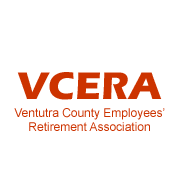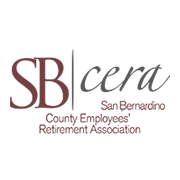Public Employee Disability Retirement After Remote Work
The widespread shift to remote and hybrid work arrangements following the COVID-19 pandemic has created unprecedented challenges for California public employees seeking disability retirement benefits. What once seemed straightforward – proving that an injury or illness arose from and occurred in the course of employment – has become significantly more complex when the workplace is a home office, kitchen table, or spare bedroom. At Cantrell Green in the Los Angeles area, we offer comprehensive legal representation for public employees navigating disability retirement claims, bringing more than 50 years of experience protecting the rights of injured workers to these evolving challenges.
CalPERS and other public employee retirement systems are grappling with how to evaluate disability claims when traditional workplace boundaries have dissolved. Remote work has blurred the lines between personal and professional activities, created new types of injuries, and introduced documentation challenges that complicate the claims process. Public employees who suffer work-related injuries or illnesses while working from home face heightened scrutiny from retirement systems and insurance carriers looking for reasons to deny claims. Understanding how remote work affects disability retirement claims is essential for protecting your rights and securing the benefits you deserve.
Work-Relatedness & Public Employee Disability Retirement Claims
Proving that an injury or illness is work-related represents the foundational requirement for disability retirement benefits, but remote work has made this burden of proof significantly more difficult for public employees. When injuries occur in private homes rather than government offices, retirement systems question whether activities were truly work-related or personal in nature. According to the California Public Employees’ Retirement System, disability retirement applicants must demonstrate that their condition arose out of and occurred during the course of employment, a standard that becomes murky when the workplace is also the living space.
Slip and fall injuries, repetitive stress conditions, and other common workplace injuries that would be presumed work-related in a traditional office setting face skepticism when they occur at home. Retirement systems argue that claimants could have been injured during personal activities rather than work duties, and the lack of workplace surveillance or witness testimony makes these claims difficult to refute. Public employees bear the burden of proving not only that they were working when injuries occurred but also that their home workspace setup, activities, and injury mechanisms were directly related to job duties rather than personal life.
Ergonomic injuries present particular challenges for public employee disability retirement claims involving remote workers. Carpal tunnel syndrome, back pain, neck injuries, and other musculoskeletal conditions that develop gradually may have multiple contributing factors, and retirement systems argue that home furniture, personal activities, or pre-existing conditions caused or contributed to disabilities. The absence of employer-provided ergonomic equipment or workspace inspections that would exist in traditional offices eliminates evidence that might otherwise support work-relatedness findings. Experienced public employee disability retirement attorneys in the Los Angeles area at Cantrell Green understand how to build strong causation cases even when injuries occur in home settings, using detailed work schedules, job duty descriptions, and expert medical opinions to establish the required connection between employment and disability.
Documentation for Public Employee Disability Retirement
Remote work has created significant documentation challenges that complicate disability retirement claims for California public employees. Traditional workplace injuries generate incident reports, witness statements, surveillance footage, and immediate supervisor documentation that provide contemporaneous evidence supporting claims. Home-based injuries often lack these documentation sources, leaving public employees with minimal objective evidence to support their versions of how and when injuries occurred.
Supervisor oversight and verification of work activities becomes nearly impossible in remote settings where managers cannot directly observe when employees are working, what tasks they are performing, or what conditions contributed to injuries or illnesses. Retirement systems exploit these documentation gaps to question whether claimants were actually performing work duties when injuries occurred or whether conditions truly resulted from employment rather than personal activities. Public employee disability retirement attorneys must work creatively to develop alternative forms of documentation including computer login records, email time stamps, work product creation dates, and video conference attendance logs that can establish work activity patterns.
Medical documentation presents additional complications when public employees seek disability retirement based on conditions that developed during remote work. Physicians treating these patients often have limited understanding of job duties, work environments, or specific activities that may have caused or contributed to disabilities. Remote workers may delay seeking treatment for gradually developing conditions because symptoms initially seem minor or they attribute discomfort to personal rather than work-related factors. These treatment delays create gaps in medical records that retirement systems characterize as evidence that conditions were not serious or work-related. The experienced public employee disability retirement attorneys in the Los Angeles area at Cantrell Green guide clients through the documentation process from the earliest stages of claims, ensuring that medical providers receive complete information about job duties and work conditions necessary for supporting disability retirement applications.
Remote Work in Public Employee Disability Retirement Cases
Remote work has introduced injury patterns that did not exist in traditional public employment settings, creating novel legal questions for public employee disability retirement claims. Technology-related injuries including eye strain, headaches, and vision problems from prolonged screen time without proper lighting or equipment have increased dramatically among remote workers. These conditions often develop gradually without a specific incident date, making it difficult to establish when disabilities began and whether they meet the sudden onset requirements that some retirement systems impose for certain types of claims.
Mental health conditions including anxiety, depression, and stress-related illnesses have surged among remote public employees who struggle with isolation, work-life boundary dissolution, and the psychological toll of pandemic-era public service. According to the National Institute for Occupational Safety and Health, remote workers report higher rates of stress and mental health challenges compared to their in-office counterparts, yet proving that these conditions arose from employment rather than general life circumstances presents significant obstacles. Retirement systems argue that mental health conditions have multiple causes and that the home environment, personal relationships, or pre-existing susceptibilities contributed to disabilities rather than work duties alone.
Ergonomic injuries from makeshift home workspaces represent another category of disabilities that public employee disability retirement attorneys increasingly handle. Public employees who transitioned to remote work often lack proper office chairs, adjustable desks, computer monitors at appropriate heights, or adequate lighting that employers would provide in traditional offices. Repetitive stress injuries, back problems, neck pain, and other musculoskeletal conditions develop from sustained poor positioning and inadequate equipment, yet retirement systems question whether these injuries truly resulted from employment when they occurred in employee-controlled home environments. The skilled public employee disability retirement attorneys in the Los Angeles area at Cantrell Green have successfully represented numerous clients with these emerging injury patterns, developing expertise in proving work-relatedness despite the unique challenges remote work presents.
Employer Responsibility & Remote Public Employee Disability Retirement
The shift to remote work has created ambiguity about employer responsibilities for workplace safety and equipment provision that affects disability retirement claims. California Labor Code and occupational safety regulations traditionally required employers to provide safe workplaces and appropriate equipment, but these obligations become unclear when employees work from private homes. Public employee disability retirement claims may hinge on whether government employers fulfilled their duties to ensure safe work environments or whether employees bear responsibility for home workspace conditions.
CalPERS disability retirement eligibility often involves questions about whether employers could have prevented disabilities through reasonable accommodations, ergonomic equipment provision, or workplace modifications. These analyses become more complex in remote work settings where employers may not have visited or assessed home workspaces and employees may not have requested specific equipment or accommodations. Retirement systems argue that disabilities resulted from employee choices about home workspace setup rather than employer failures, potentially affecting benefit eligibility or amounts.
Workers’ compensation coordination with disability retirement benefits adds another layer of complexity when injuries occur during remote work. Many public employees are unaware that they should file workers’ compensation claims for home-based work injuries, believing that the workers’ compensation system only covers traditional workplace incidents. Failure to pursue workers’ compensation benefits can affect disability retirement claims and leave substantial compensation on the table. Public employee disability retirement attorneys must evaluate whether concurrent workers’ compensation claims are appropriate and how these claims interact with disability retirement applications. The experienced public employee disability retirement attorneys in the Los Angeles area at Cantrell Green provide comprehensive guidance on all aspects of disability benefits, ensuring that clients pursue every available avenue for compensation and do not inadvertently waive rights through procedural mistakes.
Medical Evaluation for Remote Public Employee Disability Retirement
Independent medical examinations conducted for disability retirement claims present unique challenges when evaluating conditions that developed during remote work. Examining physicians must assess work-relatedness and disability severity without the ability to observe actual work environments or conditions that contributed to injuries. These doctors rely heavily on claimant descriptions of home workspaces, job duties, and injury mechanisms, but retirement systems often discount this self-reported information as biased or unreliable.
Functional capacity evaluations that assess what work activities claimants can perform become more complex when disabilities involve remote work capabilities. Traditional disability assessments focus on physical abilities like lifting, standing, walking, and reaching that correlate with in-person job duties. Remote work disabilities may involve limitations in sustained computer use, ability to maintain focus during video conferences, or capacity to work effectively in home environments with distractions. These functional limitations do not fit neatly into standard disability evaluation frameworks, potentially leading to underestimation of actual impairment.
Vocational rehabilitation considerations factor into disability retirement eligibility determinations, particularly for industrial disability retirement where claimants must show substantial impairment of ability to perform usual job duties. The expansion of remote work options arguably increases the range of jobs that disabled public employees could perform, giving retirement systems arguments that claimants could continue working in modified remote positions rather than qualifying for disability retirement. Public employee disability retirement attorneys must address these vocational arguments by demonstrating that even with remote work accommodations, disabilities prevent substantial performance of job duties. The top public employee disability retirement attorneys in the Los Angeles area at Cantrell Green work with vocational experts and medical specialists who understand how to properly evaluate disability in the context of modern remote and hybrid work arrangements.
Privacy Concerns in Remote Public Employee Disability Retirement
Home-based work injuries raise privacy concerns that affect evidence gathering for disability retirement claims. Retirement systems may request photographs or videos of home workspaces, arguing that this documentation is necessary to evaluate whether work conditions contributed to claimed disabilities. Public employees must balance their privacy interests in their homes against the need to provide evidence supporting their claims, creating tensions that did not exist when injuries occurred in public workplaces.
Surveillance by insurance carriers or retirement system investigators has expanded to include monitoring of claimants’ home activities, social media posts showing home workspace setups, and neighborhood canvassing to gather information about claimants’ daily routines. This surveillance may capture personal activities that have nothing to do with disability retirement claims but that investigators use to argue that claimants are not as disabled as claimed or that injuries did not occur as described. Public employees pursuing disability retirement must be aware that their private lives may be scrutinized in ways that feel invasive and that their social media presence can affect claim outcomes.
Technology monitoring by employers creates additional evidence that can help or hurt disability retirement claims. Many government agencies implemented productivity monitoring software when employees transitioned to remote work, tracking keystrokes, active work time, application usage, and even webcam images. This data can provide objective evidence of when employees were working and what tasks they were performing when injuries occurred, but it can also reveal gaps in work activity that retirement systems use to question disability severity or work-relatedness. The experienced public employee disability retirement attorneys in the Los Angeles area at Cantrell Green understand how to use technology evidence strategically while protecting client privacy rights and challenging overreach by retirement systems.
Attorneys’ Appeal Strategies for Public Employee Disability Retirement
Disability retirement denials based on remote work complications require sophisticated appeal strategies that address the unique evidentiary challenges these cases present. Public employee disability retirement attorneys must develop detailed chronologies showing work patterns, job duty performance, and the progression of symptoms that establish work-relatedness despite the home setting. Expert testimony from occupational medicine physicians, ergonomic specialists, and vocational rehabilitation counselors becomes essential for overcoming retirement system arguments that disabilities resulted from personal rather than work-related factors.
Comparative evidence showing that similar injuries or conditions have been accepted as work-related in traditional workplace settings can support arguments that remote work location should not change the analysis of whether disabilities arose from employment. The fundamental question remains whether injuries or illnesses resulted from job duties and work conditions, not whether those duties were performed in a government office or private home. Public employee disability retirement attorneys must reframe the conversation to focus on causation rather than location, emphasizing that remote work was an employer-directed change rather than an employee preference.
Regulatory interpretation arguments may prove successful in some cases, as many disability retirement statutes and regulations were written before widespread remote work existed and do not specifically address how work-relatedness should be evaluated for home-based injuries. Public employee disability retirement attorneys can argue for broad interpretations that protect worker rights and adapt traditional standards to modern work arrangements rather than narrow readings that unfairly penalize public employees for circumstances beyond their control. The skilled public employee disability retirement attorneys in the Los Angeles area at Cantrell Green have successfully appealed numerous disability retirement denials, including those involving complex remote work issues, securing benefits for clients through persistent advocacy and creative legal arguments.
Public Employee Disability Retirement Attorney | Los Angeles Area
Remote work has transformed the landscape of disability retirement claims for California public employees, creating challenges that require experienced legal representation to navigate successfully. The issues discussed above reflect the complex intersection of evolving work arrangements, traditional disability retirement requirements, and the documentation obstacles that can derail legitimate claims. At Cantrell Green in the greater Los Angeles area, we give every case the individual care and attention it deserves, combining more than 50 years of aggressive advocacy for injured workers with deep expertise in public employee disability retirement law.
Our attorneys are among the best in the Los Angeles area for representing public employees through all stages of disability retirement claims, from initial applications through appeals and litigation. At Cantrell Green in the greater Los Angeles area, representing injured workers is all we do, and we have obtained more than 100 million dollars in compensation for clients through dedicated advocacy and comprehensive legal representation. If you are a California public employee dealing with a work-related disability that developed during remote work, schedule an appointment today to discuss your case with attorneys who understand both the legal complexities and practical realities of modern disability retirement claims.
Los Angeles Public Employee Disability Retirement Attorney: 562-622-4800
This article is for general information only and may or may not reflect the rules, laws or regulations governing how your specific public retirement system is administered. If you have question about a specific public employee retirement system, find your system, below – or call our attorneys at: 562-622-4800

Thank You for Visiting Our Disability Retirement Blog!
Our highly specialized disability retirement attorneys are committed to ensuring that every injured or disabled public employee obtains the disability retirement benefits he or she has earned.
We have successfully filed hundreds of disability retirement applications and appeals – obtaining millions of dollars in disability retirement benefits in our four decades of legal service.
In our Disability Retirement Blog, our attorneys keep you updated on the latest, news and information pertaining to CalPERS, CalSTRS, OCERS, LACERA. SBcera, VCERA & SDCERA disability retirement.












